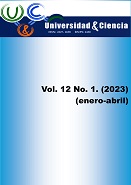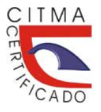Solution to pathologies due to carbonation in the housing blocks of the "Colonial Cayo Coco Hotel"
Keywords:
Carbonation in concrete, Construction pathology, Corrosion, PhenolphthaleinAbstract
Within the research framework, the measurement of the carbonation depth is present, to know if it exceeds the measurement of coating, using phenolphthalein as an acid-base indicator, which was sprayed on uncovered surfaces during the semi-destructive processes carried out on the elements. As the concrete does not offer protection for the steel when being in values of potential hydrogen (pH) lower than 9.00, depending on the results offered in a range of upper and lower turn, it was necessary tests to have a greater accuracy with respect to the risk of corrosion and obtain the percentage of those that were really carbonated. The (pH) was measured with the ExStik Concrete pH Kit model PH150-C and the evaluated areas were distributed in all the objects studied. With the results obtained, the intervention actions corresponding to the lesions were proposed, depending on their severity, and in this way provide a solution to the existing carbonation pathologies.
Downloads
References
“DURAR”, Integrantes de la Red Iberoamericana XV.B. (1997). Manual de inspección, evaluación y diagnóstico de corroción en estructuras de hormigón armado. Rio de Janeiro, Brasil: Comité editorial, ISBN 980-296-541-3.
HEREDIA AVALOS, Santiago. (2006). Experiencias sorprendentes de química con indicadores de pH caseros. Revista Eureka sobre Enseñanza y Divulgación de las Ciencias. Vol. 3, No. 1. pp. 95-96. Disponible en: https://www.redalyc.org/pdf/920/92030108.pdf. Visitado: el 21 de diciembre de 2022).
ILORO, Fabián Horacio. (2022). Efectos del co2 ambiental sobre la carbonatación de hormigones elaborados con distintos cementos. Bahía Blanca, Argentina. 261 h. Tesis en opción al grado científico de Doctor en Ingeniería. Universidad Nacional del Sur.
JIMÉNEZ REY, Agustín. (2020). Arquitectura e Ingeniería. Carbonatación en Estructuras de Hormigón Armado. Revista electrónica Esarco [en línea]. España. Disponible en: https://esarco.es/carbonatacion-del-hormigon/. Visitado: el 21 de diciembre de 2022.
MORENO BRIONES, Stalyn Humberto. (2010). Determinación de la profundidad de carbonatación y penetración de cloruros mediante experimentación empleando procesos de difusión térmica en varios diseños de hormigón. Guayaquil, Ecuador. 108 h. Tesis en opción del título de Ingeniero Mecánico. Escuela Superior Politécnica del Litoral.
SÁNCHEZ DE ROJAS NOGUERA, María José. (2004). Extracción electroquímica de cloruros del hormigón armado: estudio de diferentes variables que influyen en la eficiencia del tratamiento. Alicante, España. 285 h. Tesis en opción al grado científico de Doctor en Ingeniería. Universidad de Alicante.
Downloads
Published
Versions
- 2023-05-24 (2)
- 2023-01-25 (1)
How to Cite
Issue
Section
License
Copyright (c) 2023 Universidad & ciencia

This work is licensed under a Creative Commons Attribution-NonCommercial-ShareAlike 4.0 International License.





















